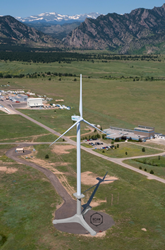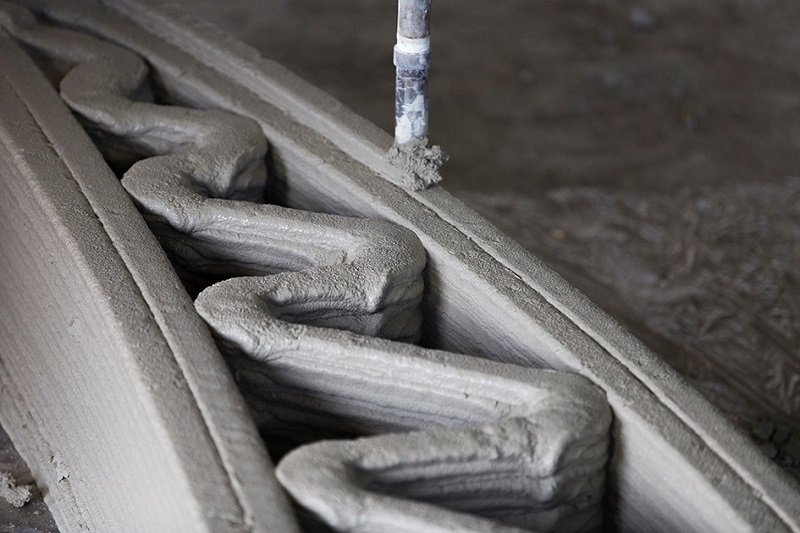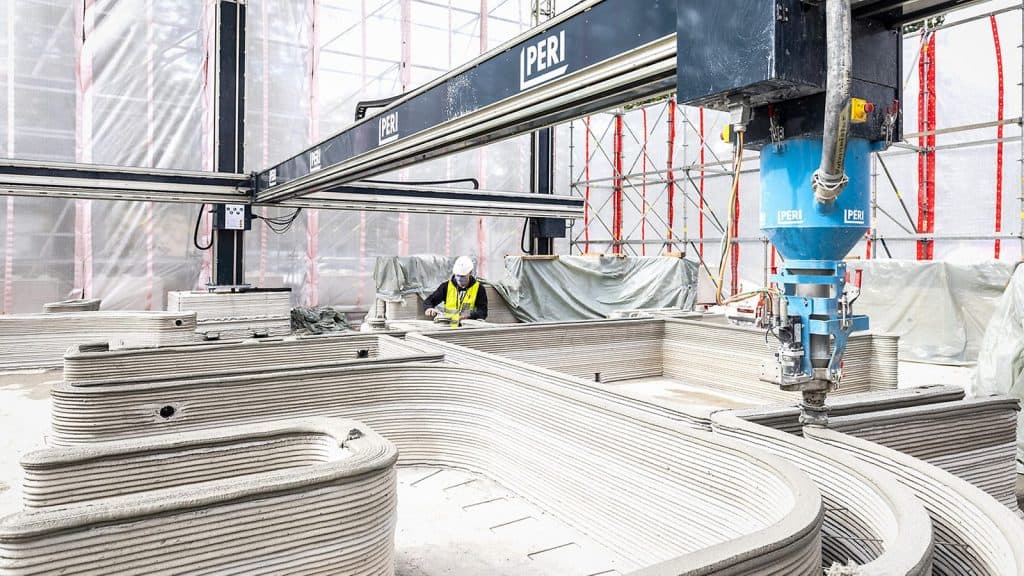

3D printing has been a big buzz term over the past decade–and for good reason. Though initially developed for product prototyping purposes, 3D printing technology has advanced to the point where it has emerged as a key player in a variety of industries.
While clearly, 3D printing technology has proven beneficial in the medical, aerospace and tool-making arenas since its inception, there’s one other field that’s potentially poised to break out: the construction sector.
With 3D printers now capable of printing building walls and processing cement, the technology could help reshape construction as we know it. But is 3D printing in construction just a fleeting trend or does it have real staying power as a technology that can serve as a key long-term solution? Below, we’ll explore how 3D has been already making waves in construction and what the future looks like.
A History of 3D Printing in Construction
Before we get into a history of 3D printing in the construction industry, it’s first important to take a step back in time to the origins of 3D printing itself.
3D printing’s roots date back to the mid-1980s when stereolithography, or SLA, was conceived. SLA works as a high-powered laser and turns a liquid resin into a solid material. SLA is an additive technology, which means it involves creating a product from the ground up in a layer-by-layer fashion. Today, SLA is still one of the most popular 3D printing technologies, though 3D printing is generally considered any technology that creates parts in an additive way. Some other popular additive technologies include selective laser sintering (SLS), fused deposition modeling (FDM) and direct metal deposition (DMD).
3D printing initially was utilized for quickly and accurately creating prototype parts. As additive processes improved, however, its viable uses began to expand. Prior to the adoption of building information modeling (BIM), 3D printing was even used by architectural firms to build scale models. It wasn’t long before it was administered for more ambitious construction purposes.
For more than a decade, 3D printing has been used in several ambitious initiatives and projects in construction, including:
- In 2004, a University of South Carolina professor attempted to 3D print a wall in what’s widely accepted as the technology’s first entry into construction.
- In 2014, a full canal house built using 3D printing was completed in Amsterdam.
- In 2016, a 3D-printed mansion was completed in China.
- Also in 2016, the Dubai Future Foundation built its Office of the Future via 3D printing, a major milestone for the technology in the commercial construction sector. The fully functioning 2,700-square foot building was built by a large 3D printer that measured 120 x 40 x 20 feet. Construction took just 17 days.
The Growth of 3D Printing in Construction
While 3D printing’s emergence in the construction industry is ongoing, certain building aspects are poised for more growth than others.
Concrete, specifically, is one of them. In fact, the concrete 3D printing market is projected to be valued at $56.4 million by 2021, growth that’s largely spurred by the amount of new, innovative projects that are being planned in construction. 3D printing in concrete doesn’t appear just to be a grassroots movement, either. In February 2017, Vinci, one of France’s leading construction firms, purchased a stake in XtreeE, a French startup company that specializes in 3D printing concrete structural elements.
Though 3D printing concrete shows great potential, it’s worth noting that the overall technology when it comes to the concrete material is still in its infancy. In fact, most 3D printers that process concrete are still being tested and tweaked today, and aren’t yet designed for manufacturing purposes. However, the potential is there to additively build everything from foundations to walls to individual cinder blocks to bridges in a faster, more affordable and more environmentally-friendly manner as the technology continues to progress.
The Benefits of 3D Printing in Construction
Just why is 3D printing gaining so much buzz in the construction sector? As the industry faces increasing pressure to meet tight schedules and budgets, companies are looking to new innovations to help fill the gaps. 3D printing in construction offers a significant potential to increase efficiency in the building sector, including the following ways.
Speed
3D printing has already shown that it can build a home or building from the ground up in a matter of days. That’s a significantly faster timeframe than conventional construction, which can take months and years to fully construct a commercial building.
Waste reduction
Worldwide construction waste currently totals more than 1 billion tons each year, and according to Construction Dive, this number is expected to double by 2025. While 3D printing won’t be able to solve all of the construction waste problems, it can help. This is largely because 3D printing is an additive manufacturing process that only uses as much material as is necessary for creating a structure. When paired with other waste-reducing processes and building methods like prefabrication and lean construction, the potential of a waste-zero building seems all the more likely.
Design freedom
One of the great things about 3D printing is the design freedom that it offers. Architects are able to build complex designs that are otherwise unattainable, or too expensive or labor-intensive to create by conventional construction means. This can allow for a lot more innovation and creativity in the commercial construction space.
Reduce human error
According to OSHA, more than 5,000 workers are killed on the job each day. Because construction would be more programmable and automated, worker injuries and fatalities would likely decrease if 3D printing was incorporated onto the jobsite.
The Challenges of 3D Printing in Construction
Despite the benefits and potential that 3D printing has in the construction sector, there are a number of factors that may prohibit the technology from becoming mainstream. Below, let’s explore a few of these challenges.
High costs
Perhaps the biggest challenge to the widespread adoption of 3D printing technology on construction sites is the high cost of purchasing or renting such equipment and the logistics involved in getting these large 3D printers to the work site. 3D printers are costly, and that upfront purchase cost doesn’t include materials or maintenance. Right now, it’s difficult for many construction professionals to justify 3D printing’s cost over the technology’s benefits.
Labor shortage
The construction sector is booming and skilled workers are in high demand. The only problem is that there are not enough of them. According to U.S. News, construction employers are finding it increasingly difficult to fill around 225,000 vacant jobs each month–and many in the industry worry that the labor problem is worsening.
Even considering the labor shortage, 3D printing requires an even more specific skill set that would have to pull from a slimmer and more niche group of candidates. Construction labor shortages are already a problem, and finding qualified workers to employ in 3D printing construction environments could prove to be even more challenging.
Quality control
Weather already has the potential to slow construction progress, but issues with Mother Nature may be amplified with 3D printing. The weather, environmental factors and more are all conditions that could make 3D printing in commercial construction more of a bust than a boom. Furthermore, quality control in construction can already be a tricky matter. If not constantly monitored and overseen by real humans, quality in 3D printing could end up being a very expensive mess.
Regulations
One drawback that might not immediately come to mind is the regulation of 3D printing. While regulation in 3D printing has made the news cycle recently, it still hasn’t fully impacted the construction industry. However, there’s also the liability that may come with using printers rather than humans to perform certain construction tasks. Currently, there’s much uncertainty in this aspect of 3D printing in construction. Until laws and regulations are clearly defined, it’s unlikely that 3D printing will make too much of a mark in the construction sector.
A Hopeful Future Remains for 3D Printing in Construction
Is 3D printing in construction nothing more than a fad? Or does it have real staying power? First, it’s important to note that the technology isn’t currently advanced enough for large-scale use to complete projects. Yes, there’s promise, but it’s a matter of waiting to see if the industry is going to be patient enough to let the technology advance to the point where it’s a viable option to use on a large scale.
Depending on who you ask, the construction industry is either on the cusp of adopting 3D printing or decades away from doing so. We tend to think that the potential of 3D printing in construction is too great to ignore. While the industry may never reach a point where it’s used exclusively, it’s more likely than not that the technology will be improved and advanced significantly. Overall, 3D printing is poised to be a viable solution that offers key benefits in cost savings and environmental friendliness for our building’s future.
About the Author
This article is written by Grace Ellis
Read the original post here.


